
Hua DONG,Tongji University Lecture 8 Writing strategies and ethical considerations
Lecture 8 Writing strategies and ethical considerations ©Hua DONG, Tongji University
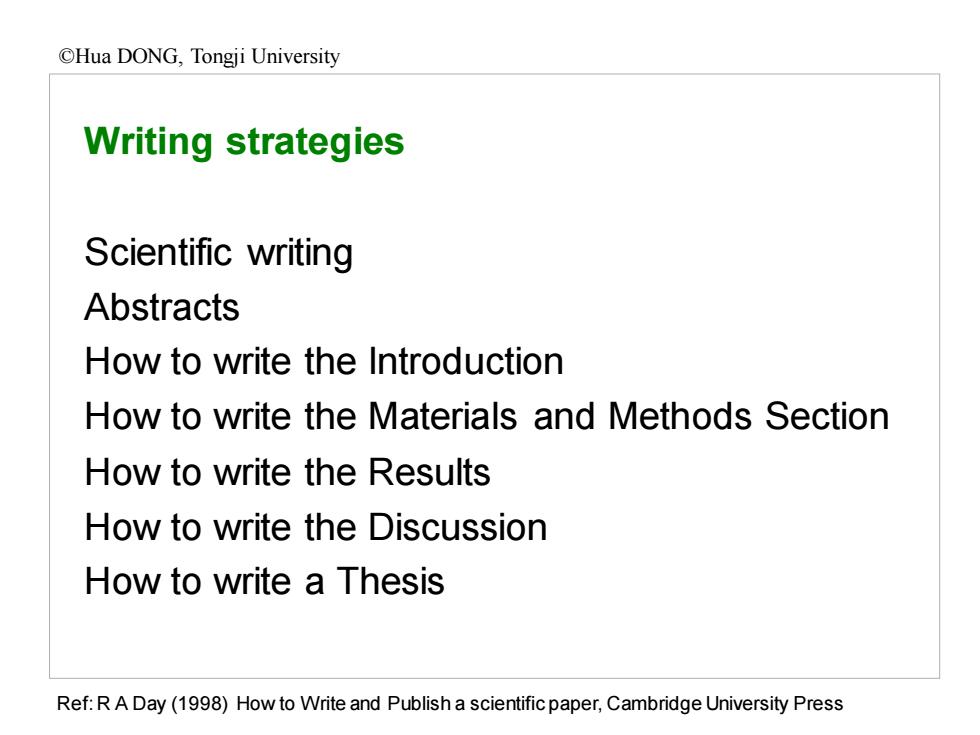
OHua DONG,Tongji University Writing strategies Scientific writing Abstracts How to write the Introduction How to write the Materials and Methods Section How to write the Results How to write the Discussion How to write a Thesis Ref:R A Day(1998)How to Write and Publish a scientific paper,Cambridge University Press
Writing strategies Scientific writing Abstracts How to write the Introduction How to write the Materials and Methods Section How to write the Results How to write the Discussion How to write a Thesis Ref: R A Day (1998) How to Write and Publish a scientific paper, Cambridge University Press ©Hua DONG, Tongji University
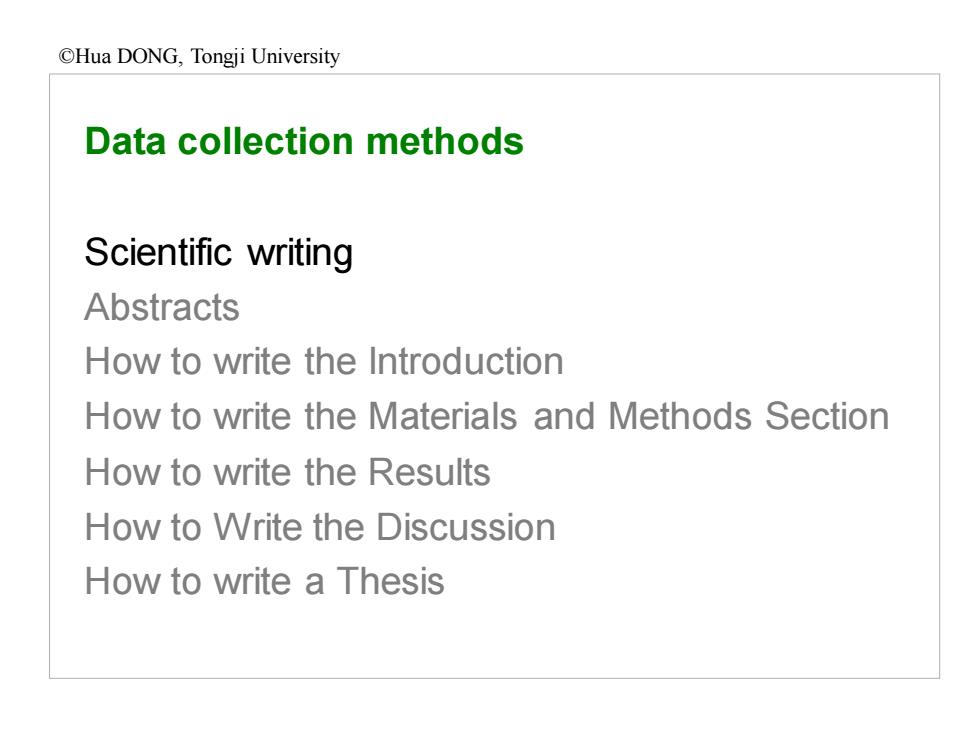
Hua DONG,Tongji University Data collection methods Scientific writing Abstracts How to write the Introduction How to write the Materials and Methods Section How to write the Results How to Write the Discussion How to write a Thesis
Data collection methods Scientific writing Abstracts How to write the Introduction How to write the Materials and Methods Section How to write the Results How to Write the Discussion How to write a Thesis ©Hua DONG, Tongji University
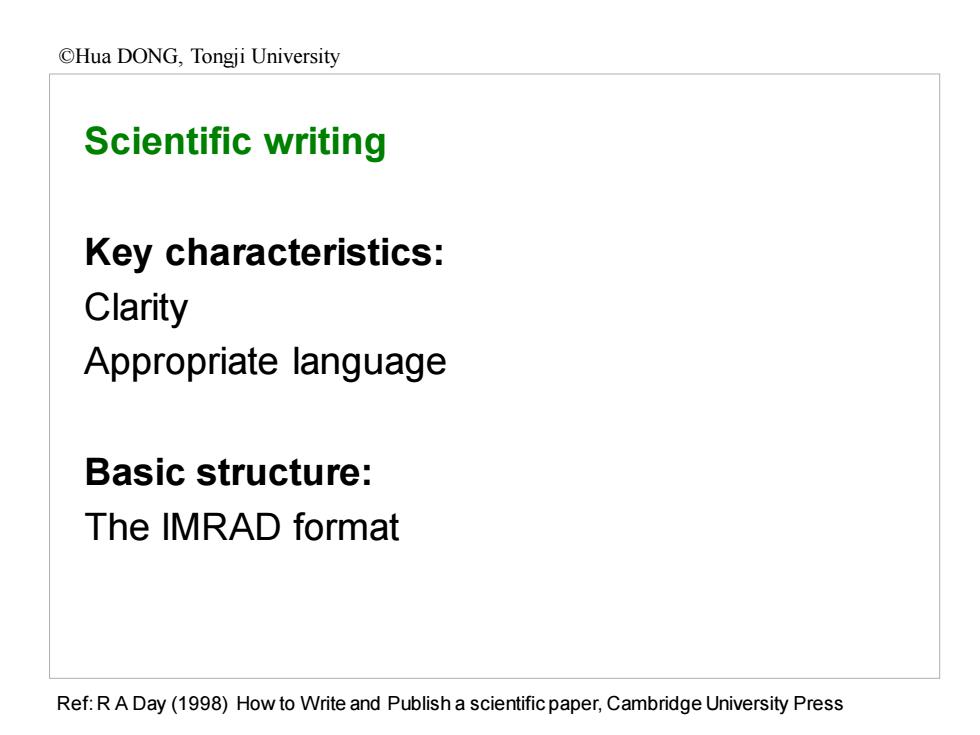
OHua DONG,Tongji University Scientific writing Key characteristics: Clarity Appropriate language Basic structure: The IMRAD format Ref:R A Day(1998)How to Write and Publish a scientific paper,Cambridge University Press
Scientific writing Key characteristics: Clarity Appropriate language Basic structure: The IMRAD format Ref: R A Day (1998) How to Write and Publish a scientific paper, Cambridge University Press ©Hua DONG, Tongji University
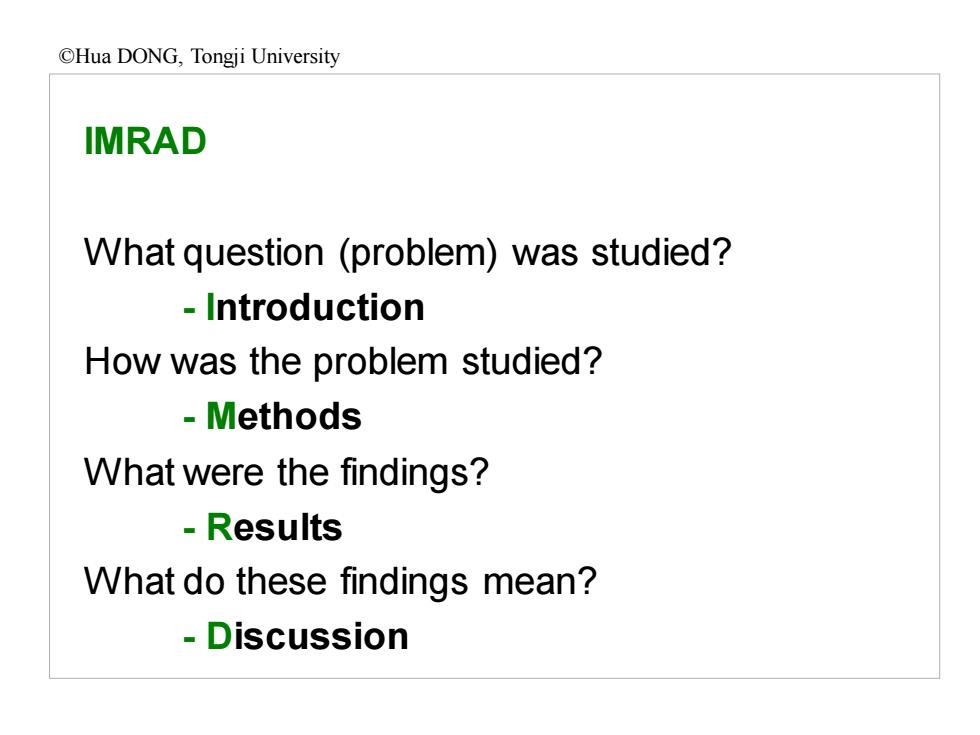
Hua DONG,Tongji University IMRAD What question (problem)was studied? Introduction How was the problem studied? Methods What were the findings? Results What do these findings mean? Discussion
IMRAD What question (problem) was studied? - Introduction How was the problem studied? - Methods What were the findings? - Results What do these findings mean? - Discussion ©Hua DONG, Tongji University

OHua DONG,Tongji University Writing strategies Scientific writing Abstracts How to write the Introduction How to write the Materials and Methods Section How to write the Results How to Write the Discussion How to write a Thesis Ref:R A Day(1998)How to Write and Publish a scientific paper,Cambridge University Press
Writing strategies Scientific writing Abstracts How to write the Introduction How to write the Materials and Methods Section How to write the Results How to Write the Discussion How to write a Thesis Ref: R A Day (1998) How to Write and Publish a scientific paper, Cambridge University Press ©Hua DONG, Tongji University
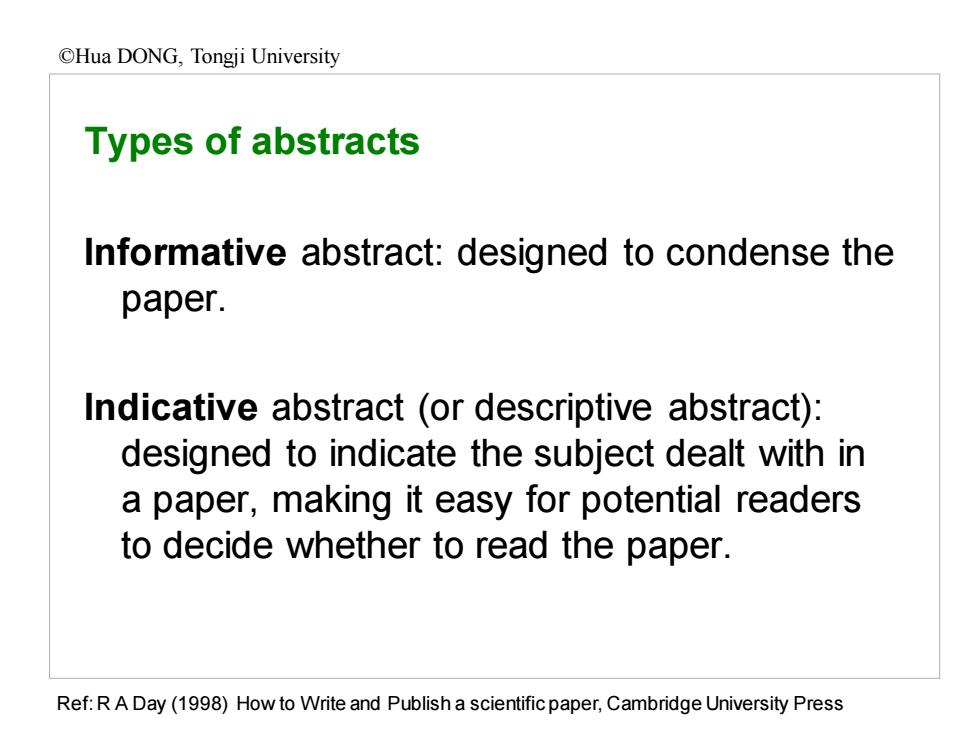
Hua DONG,Tongji University Types of abstracts Informative abstract:designed to condense the paper. Indicative abstract (or descriptive abstract): designed to indicate the subject dealt with in a paper,making it easy for potential readers to decide whether to read the paper. Ref:R A Day(1998)How to Write and Publish a scientific paper,Cambridge University Press
Types of abstracts Informative abstract: designed to condense the paper. Indicative abstract (or descriptive abstract): designed to indicate the subject dealt with in a paper, making it easy for potential readers to decide whether to read the paper. Ref: R A Day (1998) How to Write and Publish a scientific paper, Cambridge University Press ©Hua DONG, Tongji University
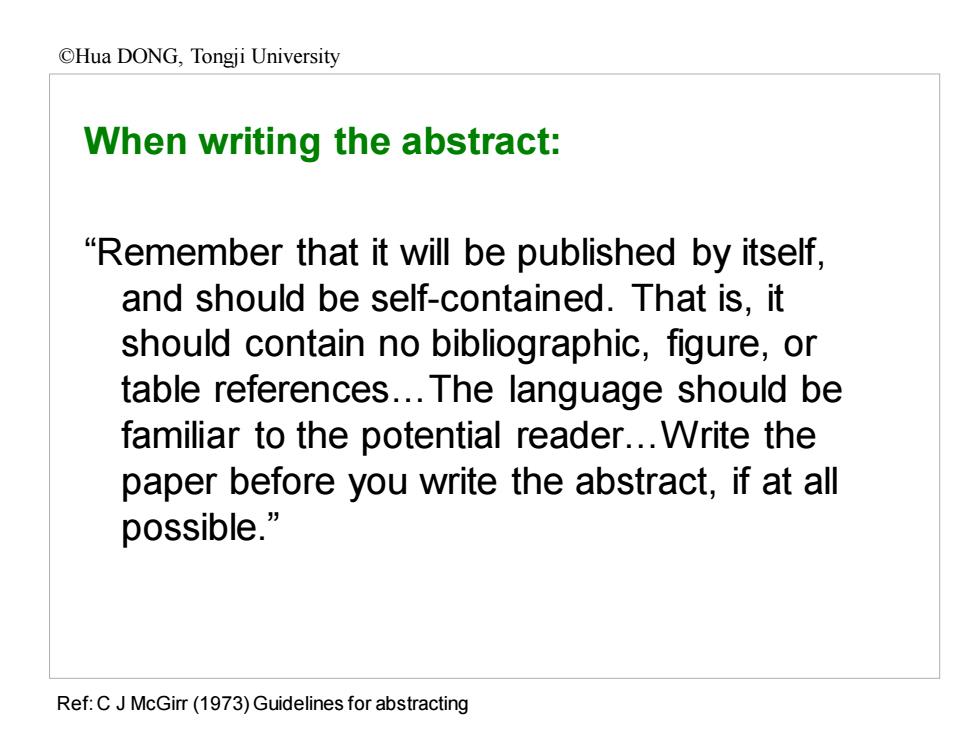
OHua DONG,Tongji University When writing the abstract: "Remember that it will be published by itself, and should be self-contained.That is,it should contain no bibliographic,figure,or table references...The language should be familiar to the potential reader...Write the paper before you write the abstract,if at all possible.” Ref:C J McGirr(1973)Guidelines for abstracting
When writing the abstract: “Remember that it will be published by itself, and should be self-contained. That is, it should contain no bibliographic, figure, or table references…The language should be familiar to the potential reader…Write the paper before you write the abstract, if at all possible.” Ref: C J McGirr (1973) Guidelines for abstracting ©Hua DONG, Tongji University
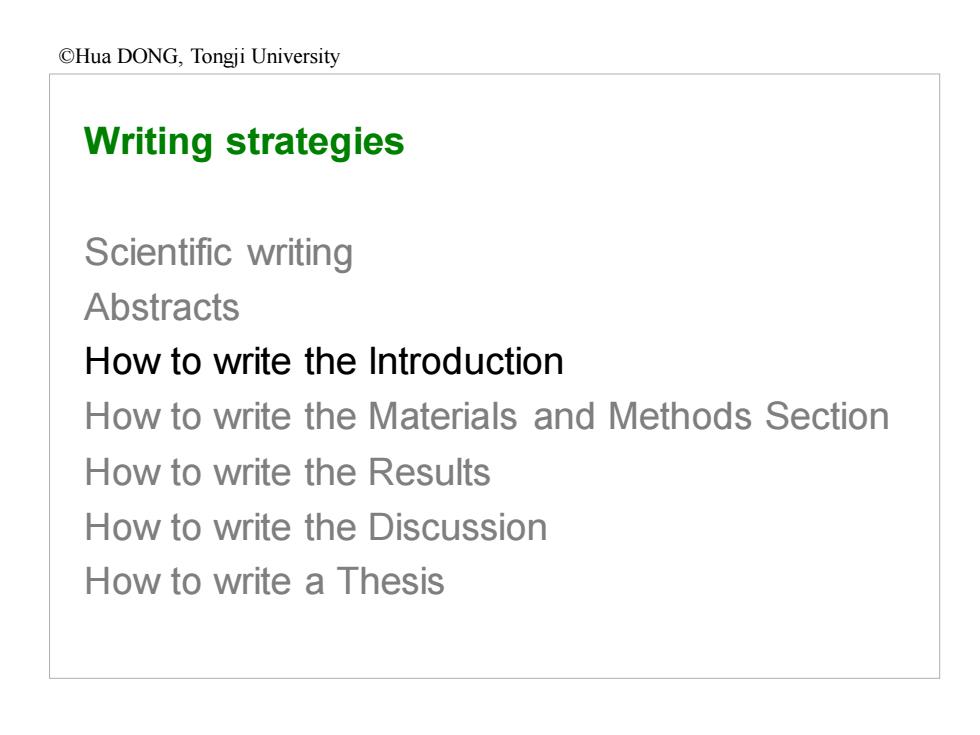
Hua DONG,Tongji University Writing strategies Scientific writing Abstracts How to write the Introduction How to write the Materials and Methods Section How to write the Results How to write the Discussion How to write a Thesis
Writing strategies Scientific writing Abstracts How to write the Introduction How to write the Materials and Methods Section How to write the Results How to write the Discussion How to write a Thesis ©Hua DONG, Tongji University
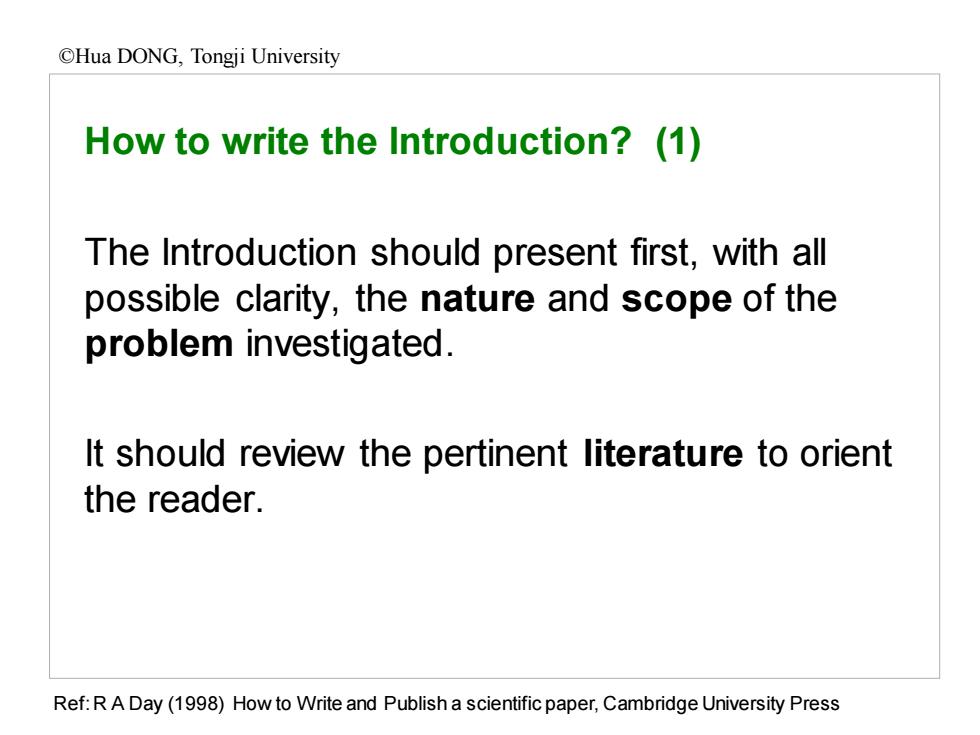
OHua DONG,Tongji University How to write the Introduction?(1) The Introduction should present first,with all possible clarity,the nature and scope of the problem investigated. It should review the pertinent literature to orient the reader. Ref:R A Day(1998)How to Write and Publish a scientific paper,Cambridge University Press
How to write the Introduction? (1) The Introduction should present first, with all possible clarity, the nature and scope of the problem investigated. It should review the pertinent literature to orient the reader. Ref: R A Day (1998) How to Write and Publish a scientific paper, Cambridge University Press ©Hua DONG, Tongji University